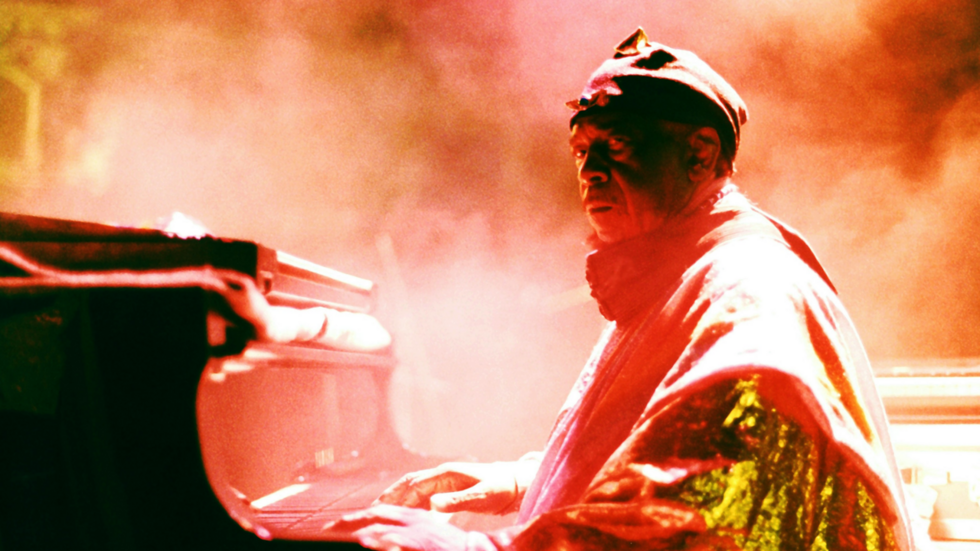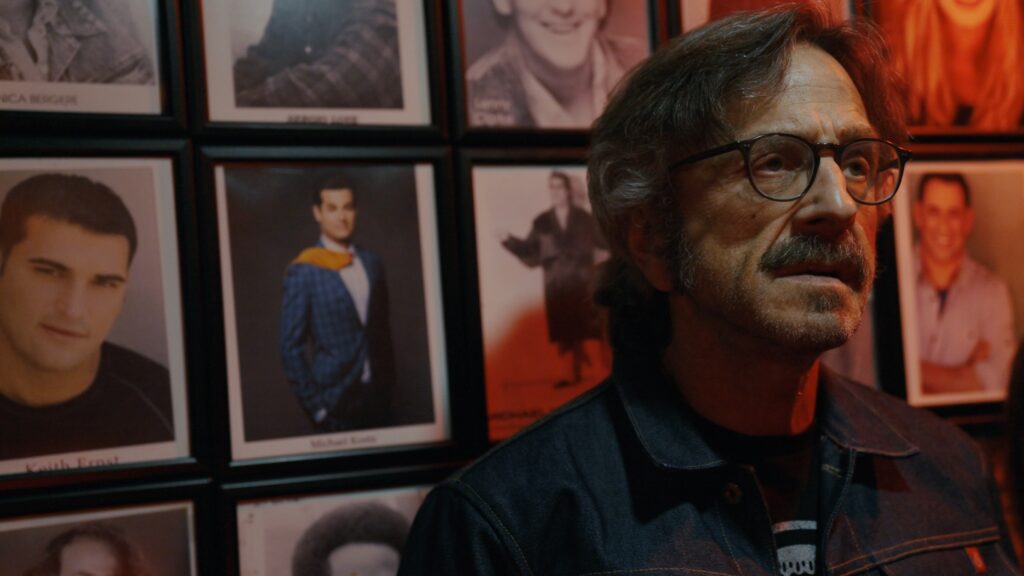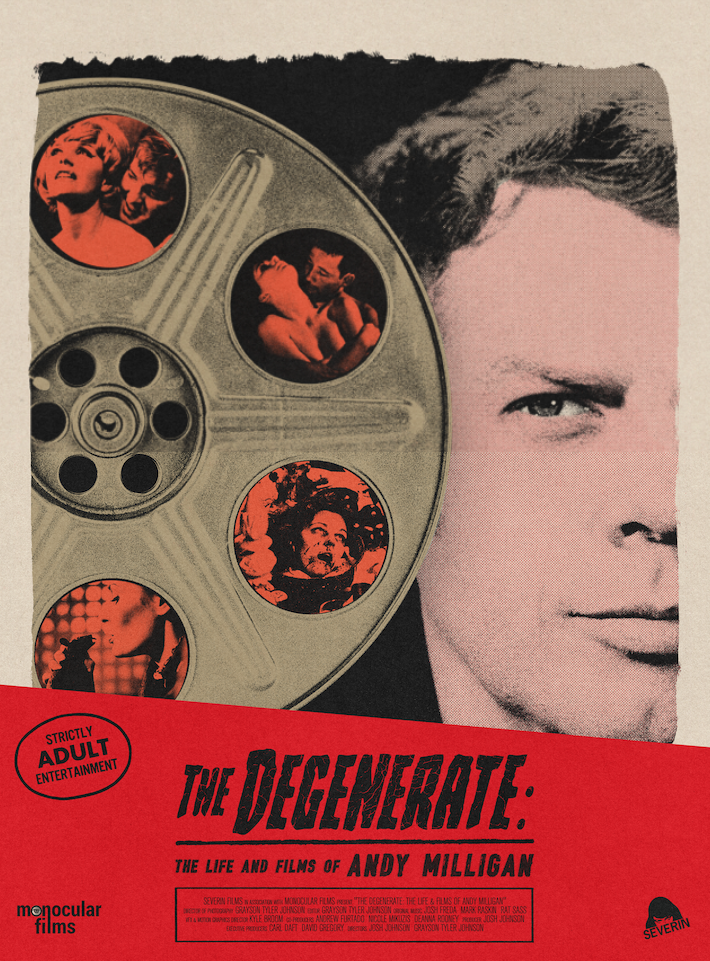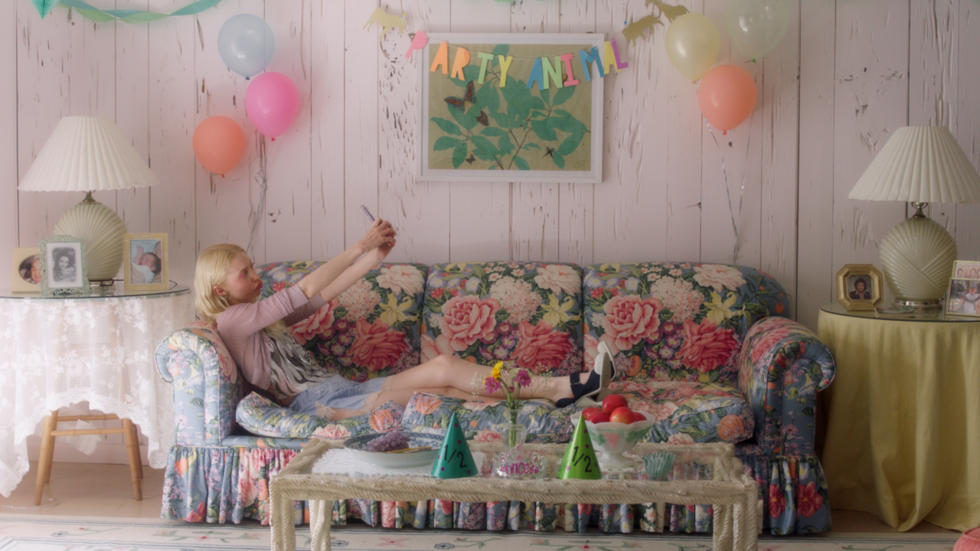Suzannah Herbert’s “Natchez” deservedly won the best documentary award at last week’s Tribeca Film Festival. It’s a fun and trenchant but never preachy analysis of how racism still exists in the American South.
Natchez, Mississippi was once a big cotton town but boll weevils in the 1930’s destroyed the crops. It then turned into a tourist destination, offering tours of dozens of well-preserved Antebellum houses. Downtown a pipe organist is pulled along in a flatbed truck, the local female aristocracy wear hoop skirts to teas and balls and a paddle boat is seen in the river. But the town has not been totally resistant to modern times: the mayor is the first openly gay one in the state and drag queens are welcomed to the teas. (A few protestors try to intimidate them.)
A huge question for the community is how to acknowledge the existence of the slave quarters. One black woman buys one of them and renovates it. Rev Collins, a black pastor of a church and a history buff, leads tours in a van showing patrons “the REAL Mississippi.” “Only five percent of white people owned slaves, but all white people benefited from the economics of slavery,” he points out.
His eye-opening history lessons are contrasted with the spiel of David Garner, an elderly Southern dandy and owner of Choctaw Hall. “Only gay men have the money and taste to own these mansions,” he boasts. He insists that his aristocratic ancestors didn’t have slaves, they had “servants.” Likeable at first he eventually shows his true colors by describing figurines with the “n” word and wishing slaves “had all just been shipped back to Africa.”
The tourist trade is threatened by the advanced age of most of the plantation owners. We can hope that the new generations of Natchez residents will continue to work to tell the true history of the town and this brilliant film may play a huge part in that.

Dan Krauss’s “Bodyguard of Lies” tells the tragic story of our costly twenty-year war in Afghanistan which gained nothing for us or the Afghans as politicians and military leaders kept claiming that we were making progress while knowing this was not the case.
It’s based largely on the “Afghan War Lessons Learned” interviews recorded but not released to the public until a 2019 Washington Post exposé. In 2001 CIA agents paid the Northern Alliance $3 million in cash to kick the Taliban out of Kabul, which they did in only a few weeks. When the U.S. invaded Iraq, the public largely forgot about the continuing insurgency in Afghanistan. Each year the amount of money spent escalated and more U.S. soldiers died. In 2008 a U.S. attack on Azizabad killed 90 innocent children after local warlords falsely identified them as Taliban in hopes of winning highly-prized U.S. contracts. The Afghan government led by Hamid Karzai was notoriously corrupt. When the Taliban took the country back and American forces hastily left in August 2021 we abandoned native translators we had promised to take with us, leaving them to be jailed and killed.
“We think everyone else wants to be like us; and they don’t,” retired General David D. McKiernan says. He was the only General who refused to lie about his command’s dismal prospects and he was fired by President Obama in 2009 for speaking the truth. A long series of interviews in this must-see film hammer home the truth that every President who held office during the war would not acknowledge: we didn’t learn anything from the Vietnam War, the first Gulf War, the War in Iraq and we probably won’t learn anything from this one either.
Tribeca always includes some great documentaries about musicians and other artists. I missed the first part of the new Billy Joel doc; I’m going to wait until I can see both parts later in the year.

“Sun Ra: Do the Impossible” serves as a good introduction to one of the most interesting musical geniuses you may have never encountered. If you missed Christine Turner’s doc at Tribeca, it will screen later on PBS as part of their “American Masters” series.
Herman Poole Blount was a black man who grew up in Birmingham, Alabama. A musical prodigy, he was composing music by age eleven and after quitting college he moved to Chicago to play in big jazz bands. He was a conscientious objector during World War II and spent over a year in jail. He later claimed that in 1936 he was teleported to the planet Saturn and that made him reevaluate his life and his music. Changing his name to Le Sony’r Ra (later shortening it to “Sun Ra”) he combined jazz with what he called “space music.” Sun Ra founded his own record company and eventually released 125 records in his lifetime! He is considered one of the pioneers of AfroFuturism.
The lineup of his band, The Sun Ra Arkestra, changed many times over the years and they still perform now, though Sun Ra died in 1993. He was also known for he and his band members’ wildly colorful Egyptian and Sci-Fi-themed costumes. In 1974 he and his band acted in a wild cult film called “Space is the Place.” Turner does an excellent job illustrating the art, music and philosophy of Sun Ra and cultivating enthusiasm about him for a new generation. She uses psychedelic animations to tie his many phases together and I expect his fan base will expand because of her film.

“Billy Idol Should Be Dead” is just one of two music documentaries released this year by the prolific Jonas Åkerlund. (The other one is “Metallica Saved My Life” which I missed.)
Born William Broad, Billy Idol grew up in a solidly middle-class family, first in Long Island, New York, then moving back to the UK when he was a teenager. He says that being middle-class meant he had to work harder to be accepted as a punk rocker, most of whom came from working class families. Idol was a guitarist for the band Generation X from 1976 to 1981, then moved to New York City to begin his solo career. He had already changed his personal style, wearing contact lenses instead of eyeglasses and dying his hair blonde with a spiky punkish cut.
He had his first big hit, “White Wedding” in 1982 as part of what was called “The Second British Invasion.” He released four successful albums accompanied by huge tours through the 1980s. A motorcycle accident in 1990 slowed him down a bit and in 1993 he released “Cyberpunk,” an experimental album made with an early version of Pro Tools that sold very poorly though some musicians in the doc claim it was prescient.
Besides his artistry and style, the film focuses on his troubled personal life and drug abuse. He had a long term relationship with actress Perri Lister, who recounts numerous times when she discovered him sleeping with fans. Once, after finding him with two naked girls in a hotel room, she went home only to discover that Idol’s assistant had been told to change the lock! Idol was addicted to heroin, got off, then got addicted again, tore up hotel rooms in Thailand ($70K of damage, his roadie friend laments) and had several children with other women.
The colorful, entertaining film (with excellent animated sequences) documents that, based on his wild lifestyle, the only reason he isn’t dead is because he had friends and family who loved him. His father, in particular, with whom he battled as a youth, was very protective of him and they later became friends. The final part of the film shows us the 69-year-old Billy Idol, still musically active and a beloved father and grandfather.

I was lucky enough to see comedian Marc Maron at the Luna Lounge comedy night in the later 1990’s and also ran into him on the subway once. Director Steven Feinartz’s “Are We Good” is a real treat for longtime Maron fans like myself.
We get to see how the 61-year-old developed as a comedian, going from Boston University to LA, then to New York where he appeared numerous times on the “Late Night with Conan O’Brien.” His caustic observations about his own relationships and changing conventions and expectations of Americans made him one of the most popular alternative stand up comedians but he didn’t see major success until he began his “WTF” podcast in 2009. Filmed in the garage of his modest house in Los Angeles he called “the cat ranch” (because of his pet cats), it quickly became one of the most downloaded shows. Starting with long-form interviews with fellow comedians, he attracted increasingly more famous guests including a highly-publicized show with President Obama. (He recently announced the podcast will end this fall.) Meanwhile, he played himself in a TV sitcom called “Maron” for four seasons and had a major role in the hit Netflix woman wrestling show “GLOW.”
The focal point of the documentary, though, is how he has dealt with the grief of his partner filmmaker Lynn Shelton’s sudden death in 2020. It took a long time for him to feel comfortable talking about her in his act. Eventually he opened up a bit about it, detailing the events of the day she died of acute myeloid leukemia disease with a combination of sadness and humor. And yes there are cats. Lots of them. The film’s intimacy is helped by his frequent retorts to the filmmaker himself: “I’m not going to shave this beard just so you can have continuity!” By the end of the film, Maron is dating a new woman and is able to answer the question in the title in the affirmative.

Scott Gracheff’s “How Dark My Love” is a portrait of 69-year-old painter Joe Coleman. The Brooklyn-based painter has a huge cult following based on his intricate and dark portraits of serial killers, obscure musicians (Hasil Adkins and Captain Beefheart), actors from earlier decades (Leo Gorcey and Jayne Mansfield). His subject matter is dark and arcane but his technique is precise. He uses a one-hair brush and jeweler’s goggles to paint acrylic on wood at the rate of one square-inch a day. His apartment in Brooklyn was called the Odditorium, a cluttered collection of mysterious objects from crime scenes, sideshows, wax museums. (He eventually had to move upstate.)
During his early years in New York he worked as a taxi driver and reports that the bleak things he saw heavily influenced his work. He made mini-comix, played in a punk band, did performance art. Much of the film is about a huge painting he made of his long-time wife, photographer Whitney Ward. Though he has attracted celebrity collectors like Iggy Pop, Johnny Depp and Leonardo DiCaprio, they struggled financially for a time because of the slowness of his working process and his resistance to sell paintings that were dear to him, like the one of his wife. This is an incredibly rich look at one of the most interesting living American artists, chock-full of hypnotic and colorful artifacts.

“Degenerate: The Life and Films of Andy Milligan” is a fascinating and entertaining study of a legendary maker of American sexploitation and grindhouse horror films whose films are hard to find now.
Jimmy Mcdonough, author of “The Ghastly One,” a 2001 biography of Milligan, explains that Andy’s childhood with a military father and an “obese, terror of a woman” mother explain why his films are so violent, chaotic and why he abhorred heavyset women. He left home, joined the Navy and then was sent packing with a section 8 discharge because of his homosexuality. In the early 1950’s he moved to New York City, opened a dress shop and acted in numerous live television shows, even performing opposite James Dean.
He then began to frequent the Cafe Cino in Greenwich Village, becoming one of the pioneers of off-off Broadway productions. He directed plays and also designed costumes. In the early 1960’s he bought a 16mm Auricon news camera and began making films. He had a gonzo film philosophy of small crews shooting in practical sets: “Just get out and do the damn thing.” The Auricon camera captured the sound on the optical part of the filmtrack, resulting in the very poor sound associated with his work. He bought leftover film reels from other productions, often shot in them in his home in Staten Island, did all the costumes, and shot in tight frames for period films so he wouldn’t have to dress the entire room. One of his visual markers was called the “swirly cam” in which he would just shake the camera around in spirals to create panic and chaos.
Milligan’s first film was “Vapors” a short released in 1965 partially shot in the St. Mark’s baths. The film was shown at an avant-garde East Village theater and promoted as “A major homosexual film comparable to Anger’s ‘Fireworks.'” This also began his association with actor Gerald Jacuzzo, who became a regular in his films. “Scorsese had his De Niro,” Mcdonough observes, “and Andy had Jacuzzo.”
Then he met William Mishkin, who produced exploitation films for the 42nd Street Grindhouse circuit. Mishkin insisted he include a wider variety of sex scenes in his films. Andy’s early films (most of which are lost) were crude mixtures of depraved sex and gore with titles like “Depraved!” and “Gutter Trash.” For a brief period he moved to London and made period British horror films. When Milligan returned to Staten Island with his film “The Rats are Coming! The Werewolves Are Here!” Mishkin instructed him to insert shots of rats filmed in NYC to tie in with the recent success of the 1971 film “Willard.”
In 1968, Andy, who was openly gay, married North Carolina actress Candy Hammond. “It was like just like a lark to her,” Mcdonough remarks. She left after a year. In 1979 Milligan bought a building on 39th street and founded a theater company where he put on off-off Broadway plays until 1985, when he moved to Los Angeles. In 1991 he died of AIDS and was so poor he was buried in a pauper’s grave.
Andy was reportedly ill-tempered, difficult to work with, into S&M, and even sometimes abused his actors. There is speculation that he may have been an undiagnosed bi-polar person for most of his life. The film most cited as his best, “Fleshpot on 42nd Street,” was issued on video by distributor Something Weird Cinema but copies are now very expensive to purchase. This fantastic documentary, directed by Josh Johnson and Grayson Tyler Johnson, should give Milligan’s films a new audience and maybe result in more affordable ways to see his work.
“Kerouac’s Road: The Beat of a Nation” directed by Ebs Burnough (whose previous work was the far superior “Capote Tapes”) attempts to make the beat writer’s work relatable to young people today but its overly woke definition of beat values is a turn off. Rich celebs identify with him, a wealthy design director of a fashion house collects first editions of his books and puts them in expensive cases. The personal struggles of contemporary people who have never read him are somehow supposed to remind us of his principles. “Maintenance Artist” is about octogenarian Mierle Laderman Ukeles, the “first-ever Artist-in-Residence at the New York City Department of Sanitation.” Since 1977 she has created performance art and installations using NYC garbage and also contributed hugely to improving the reputation of sanitation workers in the five boroughs. Toby Perl Freilich’s film is an excellent tribute to her work and a valuable contribution to the history of her city. The 2023 doc “Thank You Very Much” covered pioneering comedian Andy Kaufman from the perspective of his writing partner Bob Zmuda, but “Andy Kaufman is Me” tells his story from his family’s memories, including some fascinating extracts from a novel he wrote called “The Huey Williams Story.” “Nobu” covers the life of famous chef Nobu Matsuhisa who went from Japan to Peru to Hollywood and to NYC (where he partnered with Robert de Niro to open a restaurant). Its informative but this is no “Jiro Dreams of Sushi.” All you really need to know is that his signature dish is black cod in miso. And “Empire Skate” tells the story of skateboarding in New York City in the 90’s, along with the rise of the related fashion label Supreme.

I only saw a few of the many shorts screened, which I regret because most of the ones I saw were very good. “Chasing the Party” features a dazzling song-and-dance performance by French pop band Yelle as two teenagers try to become downtown “it” girls. One spends the evening dancing with the new gay guy friend she wants badly; the other begs a famous nightime party photographer/blogger (played by indie director Joe Swanberg) to take her picture but is torn by his demand that she pose topless since she’s “not pretty enough” for him to just to a regular snap. Directed by Jessie Komitor.

“The Hicks Happy Hour” is a high-production value AFI MFA project directed by Kate McCarthy about a Mom & Dad & their kids variety show from the 1970’s taping the final episode of what may be their last season if the absent father doesn’t show up.

Miranda Kahn’s “Fame And Other Four Letter Words” is a very funny and beautifully-produced satire of Instagram-obsessed millennials. Future scientist Maxxine (Francesca Scorsese) wants to celebrate her 19th “half-birthday” by going to the zoo with her social fashion influencer sister Jackie/@PastorSermon (“Euphoria” star Chloe Cherry) but she abandons her when Jackie can’t focus on her for even a few hours. Jackie has an “Alice in Wonderland’ afternoon filled with fantasies about Jemima Kirk (who appears as her self and an EMT in the short) and a GUCCI party that turns out to be for an ecological organization with that acronym. Featuring SNL’s Devon Walker amongst the cast.

“I Want To Feel Fun” (directed by Jessica Sanders) features Esther Povitsky (the standup comic who was so good in last year’s “Drug Store June”) as an LA teen obsessed with Nicki Minaj. She beds an older man (“Red Rocket” star Simon Rex) and interrupts her actor brother Avi (Avi Rothman) during a cringy dinner with his Korean girlfriend (Vivian Bang, who starred in “White Rabbit”) to give her a ride to a Minaj concert. She’s not worried about not having a ticket in this wildly funny short that could easily be expanded into a comic feature.
“If a junkie from Idaho can win it, so can you!” a lottery TV announcer glibly proclaims in the Nebecker Twins’ well-acted and beautiful-looking short “Jean Jacket.” Annasophia Robb plays Jean Jacket, a young woman living in a old house trailer on the range of some Western state, who looks for inspiration for the numbers she chooses, hoping to buy back a ranch she lost after her dream cowboy was “crushed” in a rodeo.
Olivia Accard’s “Baby Tooth” is a well-acted six minute comedy about a “she-devil in chartreuse” who sits in a lawn chair in front of a boat with a long string attached to one of her teeth interviewing respondents to her ad: “You here for the boat or the tooth?”
Housing is so expensive in cities in Spain, a young man in “Al Fresco” considers an unusual living arrangement as he is shown a luxurious flat with a curious layout, including zones reserved for social influencers. Directed by Ignacio Rodó.
In the charming Norwegian short “Sorry I’m Late (But I Brought A Choir)” (directed by Håkon Anton Olavsen) a man arrives at his girlfriend’s apartment with an entire group of singers hoping she’ll let them all in. She resists as the drunk strangers threaten to bring chaos into her home–shades of Jennifer Lawrence’s plight in the 2017 film “Mother.” She lightens slightly after they do a sweet performance of the Imogen Heap 2005 song “Hide and Seek.”
